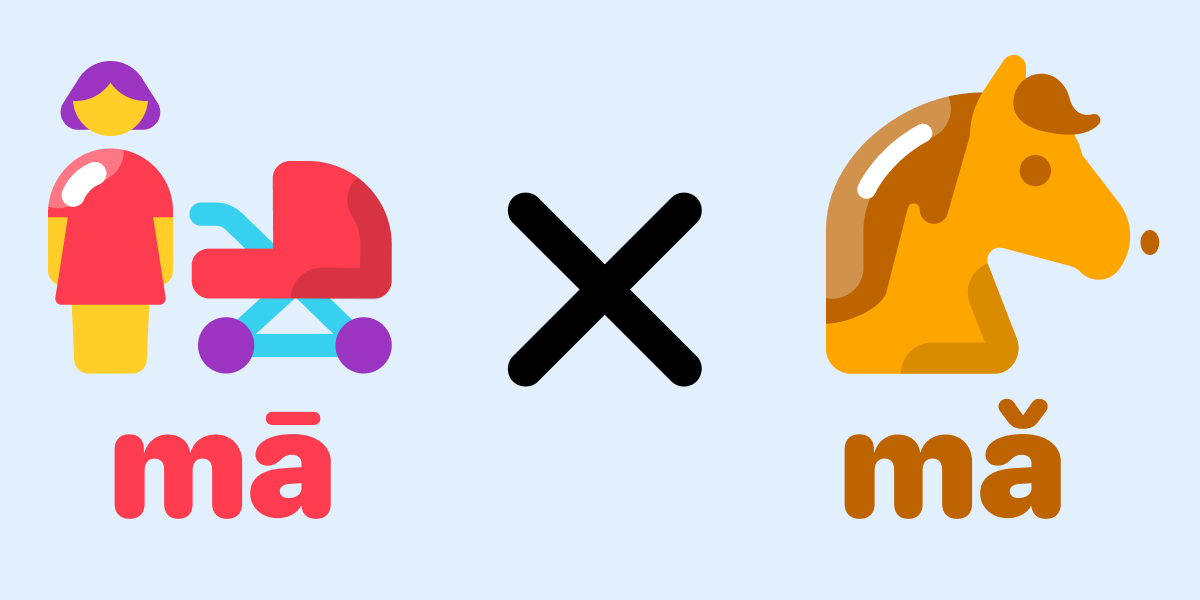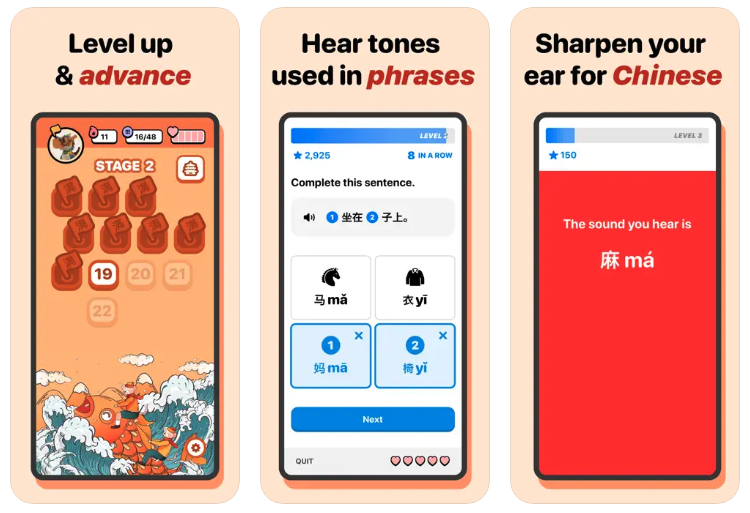The BEST Pinyin Trainer App: Master Chinese Tones Easily
So you’re learning Mandarin Chinese?
First off, kudos for starting — Chinese is no walk in the park. The US State Department rates it as a Category IV language, which means it’s “exceptionally difficult for English speakers.”
This is the highest classification available for languages, and Chinese shares this notorious label with Arabic, Japanese and Korean.
Why are Chinese, Arabic, Japanese and Korean difficult?
The main reason why Chinese, Arabic, Japanese and Korean all share the most difficult label is that their writing systems are pretty much incomprehensible to any native English speaker.
There’s no latin alphabet to help you. You can’t decipher the meaning or the pronunciation at the word simply by looking at it. Instead, you’ve got to understand a whole new writing system before you can do anything in the language.
And the hardest of them all? Chinese!
Amongst these Category IV languages, Chinese is frequently recognized as the most notoriously challenging language.
Yup, it is even harder than Arabic, Japanese and Korean. And the reason is none other than… tones!
Chinese is a tonal language, and tones are ESSENTIAL.
Chinese is unique in that depending on what pitch you use to say a word, you might mispronounce it as a completely different word. No such problem exists in other languages.
For example, the word for mother is 妈 (mā). If you say it with the wrong tone, you might end up referring to your mom as a horse 马 (mǎ)!
Tones can take years to master.
When beginners start out in Chinese, they are often unable to even hear the difference between tones, let alone reproduce them.
Intermediate learners with a few months of exposure under their belt fare a bit better. They can pinpoint the difference when listening to words with different tones, and they can recite the four tones in sequence rather accurately.
But this comes with the caveat that they can only do so in isolation — a single word or character at a time. When it comes to phrases and sentences, coupled with native-level speaking speeds, intermediate learners struggle to understand very much at all.
Advanced learners are furthest along in the journey to mastering tones. They may even have had experience living in China or Taiwan, and they can prononuce words rather accurately and catch most native-level speech. However, even they still get tripped up, often by using the wrong tone, a mistake that a native-level speaker would never make.
Whether you’re a beginner, intermediate or advanced learner, tones are something you have to work on constantly.
Why you need to train your ears
Tones are something you need to consciously practice. You can’t just ignore them while learning other aspects of Chinese and hope that magically, you’ll somehow passively absorb the ability to accurately recognize and produce the different tones.
Ignoring tones entirely is equivalent to learning English without ever working on listening or speaking. Sure, you might be able to read and write the language, but when it comes to communication, you won’t be able to understand what other people are saying, let alone say something that people might comprehend.
The quickest way to start learning tones is to train your ears to accurately hear them. Spend sufficient to listening to different tones, so that you’ll be able to confidently tell apart similar sounds.
The best part? As you improve in your listening, your pronunciation of tones will also level up — demonstrated by years and years of language acquisition research!
TIP
Training your listening is the best way to get better at both recognizing and producing tones.
Practicing tones using your mobile phone
There aren’t a lot of great options out there when it comes to learning and practicing tones. Sure, you could watch YouTube videos repeatedly, but those quickly get boring after a while. Plus, you’re only passively consuming media, not producing anything yourself.
So I created an app to solve this problem.
Ka is the best pinyin trainer app to help you master the tone system.
When you use Ka, you’ll gain exposure to a wide variety of sounds and syllables in Chinese. The app contains thousands of audio recordings and features a fun, gamified interface. You’ll find yourself tapping and swiping cards and breezing through levels while getting repeated listening and recognition practice in.
Features of Ka
- 100+ levels of content, with each level focusing on a specific syllable
- Practice tones in isolation, as well as in context within phrases and sentences
- Learn to recognize the slight differences in pronunciation between tones
- Familiarize yourself with pinyin, the system used to romanize Chinese characters
- Pick up new words and expand your vocabulary as you practice tones
- Fun, gamified interface to keep you motivated
- Earn points and challenge yourself to clear a level without making any mistakes
- Build a streak and develop a habit of practicing your tones daily
- Hunt for 48 special collectible cards within the app
- Free to use, with an optional in-app purchase
Don’t wait any longer — give Ka a spin today!
 Kai Loh
Kai Loh




